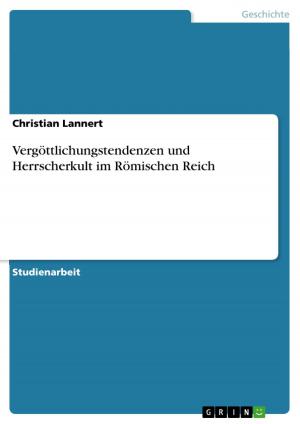| Author: | Dominik Lorenz | ISBN: | 9783640210930 |
| Publisher: | GRIN Verlag | Publication: | November 13, 2008 |
| Imprint: | GRIN Verlag | Language: | English |
| Author: | Dominik Lorenz |
| ISBN: | 9783640210930 |
| Publisher: | GRIN Verlag |
| Publication: | November 13, 2008 |
| Imprint: | GRIN Verlag |
| Language: | English |
Seminar paper from the year 2008 in the subject English Language and Literature Studies - Literature, grade: 1,7, University of Freiburg, course: Country Houses, 14 entries in the bibliography, language: English, abstract: K.W. Gransden has noted the significance of Ruth Wilcox's answer to Margaret's comment that a house 'cannot stand by bricks and mortar alone'. The first Mrs. Wilcox replies, 'It cannot stand without them.' According to Gransden, there is a persistent note of misgiving on Forster's part about this. It is more than nostalgia. The opening description of the house at Howards End begins the statement of a large and complex architectural metaphor, which is extended throughout the novel. Hardy states that buildings, and the design of them, the architectural character of a civilization, would seem to be in Foster's mind fundamentally related to its character of manners and morals. From my point of view, it is important to look at the houses in Forster's Howards End more closely. In this term paper I will show in what way Forster associates certain housing conditions with special types of characters, and to what extent he thinks housing conditions influence the way people behave and what inference he draws as to where to live. I will focus on the three main parties namely the Wilcoxes, the Schlegels and the Basts and I will show where the characters live and in which way their economic status is reflected in their housing conditions. Furthermore, I will try to emphasize Forster's position towards housing at the beginning of the 20th century. It can be said that there are portrayed three different types of houses in Howards End. Firstly the country houses, secondly the houses of the urban lower middle class and finally the London town houses. My aim is to show that there are fundamental differences between these types of houses. Furthermore, I want to prove that the narrator distinguishes the houses' quality(ies?) among themselves. After that, I will talk about the standpoint Forster takes towards the houses' quality when he shows whether they possess life, spirit or souls. Additionally, I will illustrate some of the popular concepts and current views of Forster's time concerning the people's various housing conditions. I will exemplify the narrator's preferences where one should live by taking a closer look at a couple of statements about living in the countryside versus living in the city as well as living in houses versus living in flats. In the end, I will examine the author's choice about the ideal place to live for Margaret Schlegel - his heroine - and I will try to explain to what degree this solution is realistic within the logic of the Forster's Howards End.
Seminar paper from the year 2008 in the subject English Language and Literature Studies - Literature, grade: 1,7, University of Freiburg, course: Country Houses, 14 entries in the bibliography, language: English, abstract: K.W. Gransden has noted the significance of Ruth Wilcox's answer to Margaret's comment that a house 'cannot stand by bricks and mortar alone'. The first Mrs. Wilcox replies, 'It cannot stand without them.' According to Gransden, there is a persistent note of misgiving on Forster's part about this. It is more than nostalgia. The opening description of the house at Howards End begins the statement of a large and complex architectural metaphor, which is extended throughout the novel. Hardy states that buildings, and the design of them, the architectural character of a civilization, would seem to be in Foster's mind fundamentally related to its character of manners and morals. From my point of view, it is important to look at the houses in Forster's Howards End more closely. In this term paper I will show in what way Forster associates certain housing conditions with special types of characters, and to what extent he thinks housing conditions influence the way people behave and what inference he draws as to where to live. I will focus on the three main parties namely the Wilcoxes, the Schlegels and the Basts and I will show where the characters live and in which way their economic status is reflected in their housing conditions. Furthermore, I will try to emphasize Forster's position towards housing at the beginning of the 20th century. It can be said that there are portrayed three different types of houses in Howards End. Firstly the country houses, secondly the houses of the urban lower middle class and finally the London town houses. My aim is to show that there are fundamental differences between these types of houses. Furthermore, I want to prove that the narrator distinguishes the houses' quality(ies?) among themselves. After that, I will talk about the standpoint Forster takes towards the houses' quality when he shows whether they possess life, spirit or souls. Additionally, I will illustrate some of the popular concepts and current views of Forster's time concerning the people's various housing conditions. I will exemplify the narrator's preferences where one should live by taking a closer look at a couple of statements about living in the countryside versus living in the city as well as living in houses versus living in flats. In the end, I will examine the author's choice about the ideal place to live for Margaret Schlegel - his heroine - and I will try to explain to what degree this solution is realistic within the logic of the Forster's Howards End.















